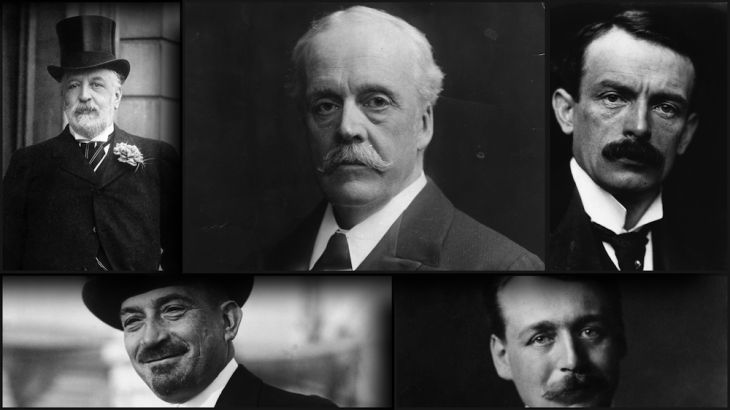
Balfour Declaration at 100: Seeds of Discord
A hundred years since Britain’s infamous declaration, its repercussions are still felt across the Middle East today.
Filmmaker: Mohammed Salameh
The Balfour Declaration was a public promise by the British government during World War One, announcing support for the establishment of “a national home for the Jewish people” in Palestine. Palestine was still a part of the Ottoman Empire at the time, with a minority Jewish population.
The 67-word document, in the form of a letter from British Foreign Secretary Arthur Balfour to the prominent British Jewish figure, Lord Rothschild, dated November 2, 1917, read:
His Majesty’s government view with favour the establishment in Palestine of a national home for the Jewish people, and will use their best endeavours to facilitate the achievement of this object, it being clearly understood that nothing shall be done which may prejudice the civil and religious rights of existing non-Jewish communities in Palestine, or the rights and political status enjoyed by Jews in any other country.
Whatever its real intentions, the declaration has had a profound impact on the Middle East and its people; and its effects still resonate across the region today.
Without Britain, the state of Israel wouldn't have been established. No question. Without the Zionists, it wouldn't have been established.
The British War Cabinet began to consider the future of Palestine during World War One in which it fought the central powers of Germany, Austria-Hungary and the Ottoman Empire.
According to historian and author Jonathan Schneer, the British somehow “felt that the Jews held the key to winning the war and so they had to figure out how to bribe the Jews to support them.”
James Renton of Edge Hill University elaborates on British motives: “We can boil it down to two elements of British self-interest at that time. Not an emotional interest in Zionism or a love of Jews and the Jewish plight and the desire for return of the Jews to the holy land, no… they wanted to mobilise the allies behind Britain and this idea of Jewish power in the world. They were all of the different policy elites in the war – believers in the notion that Jews who have tremendous influence in the corridors of power around the globe. If the British government appeared to support Zionism, they would win over World Jewry to their side, and all that entailed. The British were convinced that Zionism was really at the centre of the Jewish heart.”
Whatever its basis, the relationship between the British Zionists and the government was established in late 1916 and continued to develop throughout 1917, leading to the Declaration in November. It was the first expression of public support for Zionism by a major political power.
“As a term, ‘a national home’ didn’t exist”, says Palestinian historian Basheer Nafi. “At that time, international law was well developed. They could have used ‘self-governance’ or ‘independent state’. There was no such a term in international law as ‘a national homeland’. What did ‘a national home for the Jews in Palestine’ mean?”
The term “national home” was intentionally vague as to whether a Jewish state was contemplated. The intended boundaries of Palestine were not specified, and the British government later confirmed that the words “in Palestine” meant that the Jewish national home was not intended to cover all of Palestine.
The second half of the declaration was added to satisfy opponents of the policy, who had claimed that it would otherwise prejudice the position of the local population of Palestine and encourage anti–semitism against Jews worldwide.
While the declaration called for political rights in Palestine for Jews, rights for the Palestinian Arabs, who comprised the vast majority of the local population, were limited to civil and religious rights.
“The Jews were described as a people with the right to self-determination while the Arabs were considered non-Jewish communities,” explains French historian Philippe Prevost. “They didn’t even mention the name of the Arabs. They were called non-Jewish. They only could enjoy civil and religious rights. They had no political rights.”
READ MORE: The Balfour Declaration Explained
But the Balfour Declaration set in motion a series of events that, over two decades, began to signal its deep flaws.
The British proposed partitioning Palestine into separate Arab and Jewish states, but Arab dissent built up to the three-year Revolt between 1936 and 1939. It was a nationalist uprising against the British administration, demanding Arab independence and the end of Jewish immigration.
In May 1939, the British government had begun to reconsider its position and published a policy document, known in the UK as a White Paper. It proposed abandoning the partition of Palestine into two states – and called instead for an independent Palestine in which Arabs and Jews would share government.
It limited Jewish immigration to 75,000 for five years and said that the Arab majority should determine future immigration levels. It also said that Balfour had not meant to create a Jewish state at the expense of the Arabs – any more than the McMahon-Hussein correspondence 24 years before had promised an Arab state to Sharif Hussein of Mecca.
But the White Paper faced opposition on several fronts and was dropped by a British government suddenly preoccupied with the Second World War.
A hundred years on, the declaration’s effects still resonate across the Middle East. It still represents to Palestinians the moment an imperial power promised their land away to another people. They hold Balfour responsible for their expulsion, displacement and occupation.
|
|